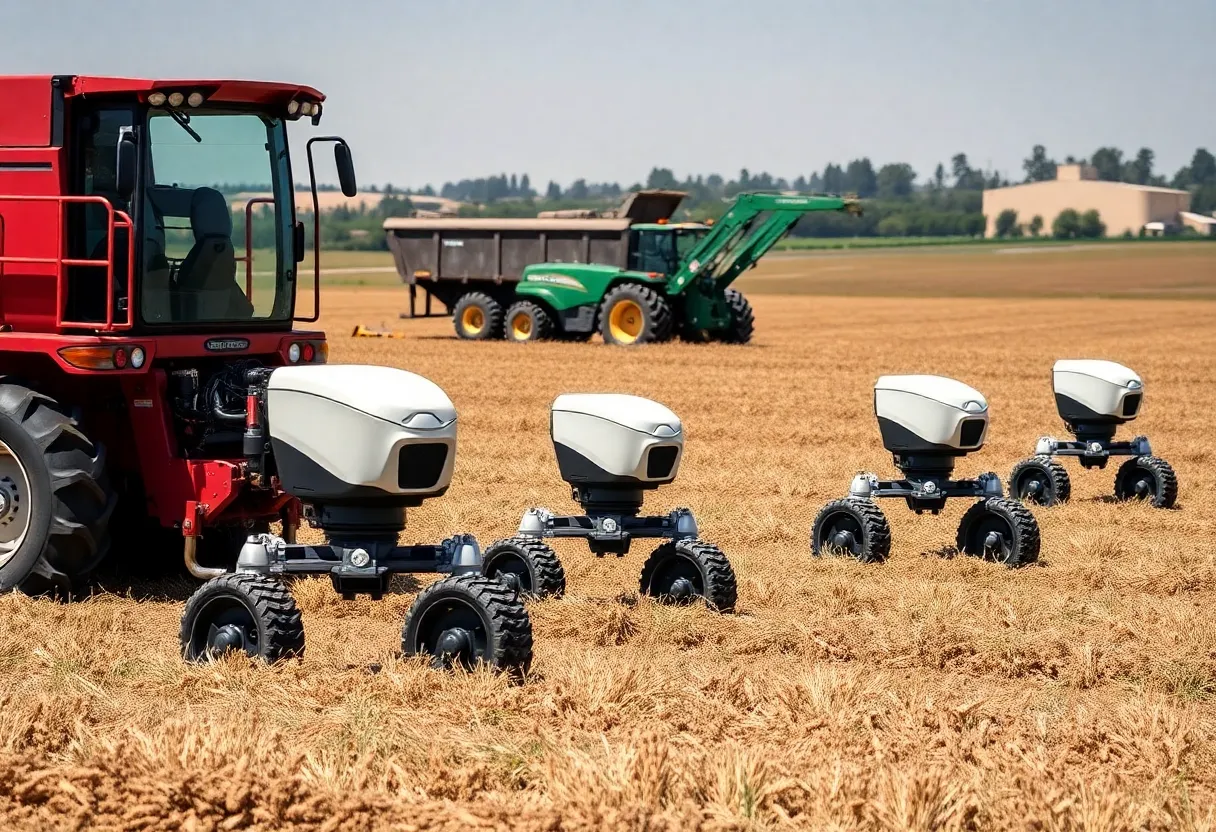California, August 26, 2025
News Summary
California farmers are grappling with a severe labor crisis, with 88,000 agricultural jobs unfilled each year. This shortage has been worsened by recent immigration enforcement actions, leading many farmers to turn to automation. Farmers like Larry Jacobs are implementing robotics to reduce human labor needs, although outdated regulations pose challenges. Agriculture Secretary Brooke Rollins has suggested various reforms, including addressing immigration policies to alleviate labor shortages, but many in the agricultural community express concerns over these proposals.
California farmers are facing a significant labor crisis exacerbated by recent immigration enforcement actions. The current labor shortage has left approximately 88,000 agricultural jobs unfilled annually in the United States, with California hosting the highest percentage of unauthorized agricultural workers—42% of its farm labor force lacks work authorization. This situation has led many farmers to explore automation as a potential solution to fill the void left by a dwindling workforce.
One Central California farmer, Larry Jacobs, has turned to technology, implementing robots to assist in maintaining his farm. Jacobs reports that he now operates with half the human workforce he previously required, presenting automation as a viable, albeit expensive, alternative to traditional farming methods. The automation equipment, such as machines produced by Bonsai Robotics, costs around $13,000—significantly less than the $80,000 needed for full-sized tractors.
However, utilizing these robotic machines is hindered by existing California regulations, which require human oversight for autonomous operations. According to Tyler Niday, the CEO of Bonsai Robotics, the laws governing these technologies were designed in the 1970s, and recent discussions have emerged about revising these outdated regulations to accommodate the growing automation trend.
The average age of farmers in the United States is now 58, leading some to hope that the integration of automated technologies may attract a younger generation to the agricultural sector. Despite the potential for automation to alleviate labor shortages, many experts caution that specific agricultural tasks—especially those that involve the delicate handling of crops like strawberries—still require skilled human labor.
The situation has worsened due to recent immigration raids, particularly those in Ventura County, where community organizers report at least 35 arrests. These actions have left many farm workers hesitant to come to work, fearing they could be detained. In light of these challenges, Agriculture Secretary Brooke Rollins has emphasized the need to focus on automation and reforming the current immigration system to address labor shortages more effectively.
Additionally, Rollins has suggested that able-bodied adults on Medicaid might be a potential source of labor for the agricultural industry, a comment that has sparked backlash from California’s agricultural community. Farmers like Helen McGrath have criticized these suggestions, highlighting the disconnect between policymakers and the realities faced by those in the industry.
The Trump administration has taken steps to facilitate the hiring of foreign labor by requesting temporary visa programs aimed at supporting the agricultural workforce. Meanwhile, discussions continue around the need for open dialogue regarding the legalization of essential migrant workers in both agriculture and service industries to mitigate the food security risks posed by restrictive immigration policies.
Critics are cautious about the idea of relying solely on automation as a replacement for human labor, pointing to prior unsuccessful attempts to fill agricultural roles with other demographics, such as welfare recipients. Furthermore, industry advocates assert that immigration policy directly influences agricultural productivity, raising concerns that current policies could undermine food security as immigration restrictions alienate the very workers essential for maintaining production levels on farms.
FAQ
What labor challenges are California farmers currently facing?
California farmers are struggling with a shortage of labor, with around 88,000 agricultural jobs unfilled annually, worsened by immigration raids affecting the workforce.
How has technology been integrated into farming to address labor shortages?
Farmers like Larry Jacobs are utilizing robots and other automation technologies to reduce reliance on human labor, managing operations with fewer workers.
What are the current legal restrictions on agricultural automation in California?
California state regulations currently mandate that autonomous machines have human oversight, limiting the extent to which farmers can utilize these technologies.
How has immigration policy impacted California’s agricultural sector?
Restrictive immigration policies have contributed to labor shortages in agriculture, with many unauthorized workers afraid to work due to the risk of detention following immigration enforcement actions.
What solutions are being proposed to address labor shortages in agriculture?
Proposals include increased use of automation, reforms in worker immigration policies, and exploring potential labor sources within domestic populations, although these suggestions have met with mixed reactions from the agricultural community.
Deeper Dive: News & Info About This Topic
- Los Angeles Times: Trump Administration’s Agricultural Policy
- Wikipedia: Agriculture in California
- Farmonaut: California’s Agricultural Labor Crisis
- Google Search: California agriculture labor crisis
- Future Farming: Agricultural Robotics Market
- Google Scholar: Agricultural Automation
- CBS News: Farming Automation and Labor
- Encyclopedia Britannica: Agriculture
- The Guardian: Trump Administration’s Impact on Farm Workers
- Google News: Farm Workers and Immigration Policy

Author: STAFF HERE MISSION VIEJO WRITER
The MISSION VIEJO STAFF WRITER represents the experienced team at HEREMissionViejo.com, your go-to source for actionable local news and information in Mission Viejo, Orange County, and beyond. Specializing in "news you can use," we cover essential topics like product reviews for personal and business needs, local business directories, politics, real estate trends, neighborhood insights, and state news affecting the area—with deep expertise drawn from years of dedicated reporting and strong community input, including local press releases and business updates. We deliver top reporting on high-value events such as Oso Fit 5K Fun Run and Community Health Fair, Walk Against Drugs & Community Fair, and National Night Out. Our coverage extends to key organizations like the Mission Viejo Chamber of Commerce and Providence Mission Hospital Mission Viejo, plus leading businesses in retail and education that power the local economy such as The Shops at Mission Viejo, Capistrano Unified School District, and Amazon Delivery Station. As part of the broader HERE network, including HEREAnaheim.com, HEREBeverlyHills.com, HERECostaMesa.com, HERECoronado.com, HEREHollywood.com, HEREHuntingtonBeach.com, HERELongBeach.com, HERELosAngeles.com, HERESanDiego.com, and HERESantaAna.com, we provide comprehensive, credible insights into California's dynamic landscape.




